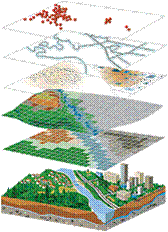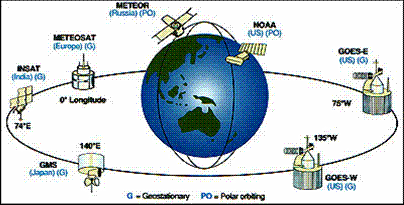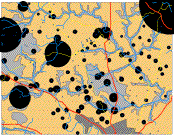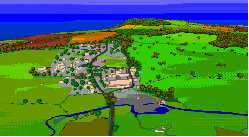

Our speakers included a television extra who had appeared on Grange Hill and met Zammo, a born and bred Norwich boy who is a Fellow of the Zoological Society of London, someone whose family has a mountian in Antarctica named after them, a weekend tank driver and someone who recently tried to explain GIS to the audience of Al Murray's Happy Hour. With that sort of pedigree our twelve teachers, a mixture of geographers and scientists from 7 different schools across Norfolk and Suffolk, were in for a treat. Together they shared a collective expertise in GIS.
"Idea of geographer & scientist coming together was excellent - v.pleased my managers also saw the potential benefit"
Local host, Andrew Lovett, from the School of Environmental Science (UEA) gave a wonderful step-by-step guide by way of an introduction to GIS, explaining important definitions and context, how GIS integrates lots of information linked to spatial references (eg. post codes, grid references, place names) and shows how these 'layers of information' relate to each other.
We then heard a commercial viewpoint on GIS, provided by Mark Corbin, a representative of ESRI UK, who are developing 'real life' applications of GIS, making it part of our everyday lives. ESRI is a worldwide operation employing over 3000 people and investing $100 million in R & D annually. It was really useful to hear this perspective on GIS with examples of GIS in planning, transport and environmental applications to name but a few.

One of the sources of data often used in GIS application is derived from satellite imagery, and after coffee, our third speaker, Doreen Boyd from Nottingham University, spoke about how this information is generated and what it is used. This included a current project looking at the effects of the Chernobyl disaster on the forests of Belarus that interested a great number of the participants.
Remote Sensing is the science and art of acquiring information (spectral, spatial, temporal) about material objects, area, or phenomenon, without coming into physical contact with the objects, or area, or phenomenon under investigation. Without direct contact, some means of transferring information through space must be utilised. The Electro-Magnetic Radiation (EMR), which is reflected or emitted from an object, is the usual source of  Remote Sensing for earth observation.
Remote Sensing for earth observation.
Remote Sensing technology makes use of the wide range Electro-Magnetic Spectrum from a very short wave "Gamma Ray" to a very long 'Radio Wave' together with characteristic reflectance curves (or spectral signatures) for different materials, allowing scientists to distinguish between different components of the earth. These may be major differences (eg. land and sea) or different chlorophyll profiles in different vegetation types.
To complete the picture, Alex Singleton a PhD student from the Spatial Literacy in Teaching team at University College London explored geodemographics: small area indicators of social and economic conditions, illustrating his talk with some fascinating examples of the power of GIS in studies into population movement and cultural identity including the popular surname mapping project. This social geographic approach brought to a close a very diverse and complementary set of high-quality talks that were well received by our participants.


The afternoon practical programme was kicked-off by Katy Appleton (School of Environmental Science, UEA) with a look at the visualisation of future landscapes in the3D virutal reality suite. This assists with commnicating future sceanios in public discussions and as technology progresses can now be run from a laptop linked to a portable screen. The teachers then got to grips with the ArcGIS software and between torrents of rain, saw the potential offered by simple to use hand-held GPS devices, which can provide mapping datasets used in GIS applications.
Thanks to all our speakers for providing their presentations for use in schools. Just click on the "titles below" to open the presentation: note some of these are still large files and may have be been compressed affecting their resolution if printing
Dr. Andrew Lovett, University of East Anglia, "GIS: an introduction" - Presentation with images compressed, file size 432 kb
Mr. Mark Corbin, ESRI UK, "Real-life applications of GIS" - Presentation converted to pdf file, file size 4.5 MB
Dr. Doreen Boyd, University of Nottingham, "Remote sensing & GIS - what is it and how do you do it ?" - Presentation with compressed images and converted to pdf file, file size 3.55 MB
Mr. Alex Singleton, SPLINT team at University College London, "The Geography of Classification: geodemographic analysis & mapping" - Presentation with compressed images and converted to pdf file, file size 3.4 MB
Dr. Katy Appleton, SSEVREL at University of East Anglia, "Virtual landscapes on a big screen"